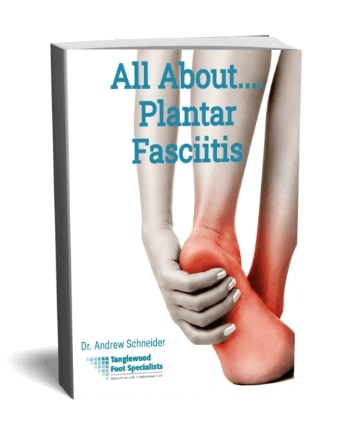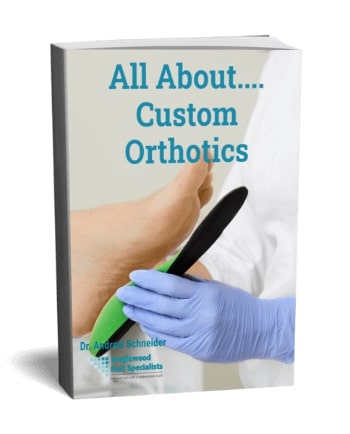Many of my Houston patients like treating plantar fasciitis without injections or medication. Even more importantly, they want pain relief without surgery. So, to promote more natural healing, I now offer Shockwave therapy for heel pain. Let's take a closer look at what causes this painful condition. Then, we'll explain why this regenerative medicine option gives superior relief.
What is Plantar Fasciitis?
Plantar fasciitis is a painful cause of heel pain. It's one of the main reasons patients come in with pain in their arches and heels. Usually, the pain is worst when you first get out of bed in the morning. At first, the pain improves throughout the day. But without treatment, your pain may become a chronic problem.
Causes of Plantar Fasciitis
At the bottom of your foot, you have a ligament that attaches to your heel. Called the plantar fascia, it runs towards your toes. And it has a big job: supporting your feet and keeping you stable.
But it also takes a lot of pressure. Every time you walk, the plantar fascia has to absorb the heel. Over time, the tugging motion creates inflammation in your plantar fascia. (Most often where the ligament meets your heel.) When that happens, the heel pain of plantar fasciitis becomes a problem.
Heel Spurs and Plantar Fasciitis
Heel spurs and plantar fasciitis are two separate conditions. Basically, bone spurs are extra bony growths that form on other bones. While they may cause heel pain, at least half of people with heel spurs don't experience any discomfort. While many people with plantar fasciitis have heel spurs, the spurs are also not usually the cause of that inflammation. As a result, you can relieve your heel pain without removing your heel spurs, contrary to what many people believe.
Treating Plantar Fasciitis Symptoms
Intense heel pain that's worst in the morning, or after long periods of sitting, is the most common symptom. Still, because the ligament runs through your foot, plantar fasciitis can also cause arch pain. Sometimes, you may develop heel and arch pain at the same time!
Traditionally, we managed plantar fasciitis in several ways. Stretching your plantar fascia can help relieve the heel pain. We also have success using anti-inflammatory medications to reduce inflammation. Some people find relief by wearing a night splint. And I'll often fit my heel pain patients with custom orthotics. That way, we can make up for biomechanical issues that put too much pressure on your ligament. As a result, we can prevent plantar fasciitis from returning.
Recently, more of my patients have been asking about regenerative medicine. They want more natural treatment options. And they want to help their bodies heal without injections or medications. For that reason, I've started treating plantar fasciitis with Shockwave therapy.
What is Shockwave Therapy?
 Shockwave Therapy is the non-surgical, non-invasive treatment option my patients want. There are several forms of Shockwave treatments. But I use Extracorporeal Pulse Activation Technology (EPAT). It's a low-intensity option. And it's a form of regenerative medicine because it speeds up your body's ability to heal.
Shockwave Therapy is the non-surgical, non-invasive treatment option my patients want. There are several forms of Shockwave treatments. But I use Extracorporeal Pulse Activation Technology (EPAT). It's a low-intensity option. And it's a form of regenerative medicine because it speeds up your body's ability to heal.
It helps treat plantar fasciitis with different sound and energy waves. When I target your ligament with the waves, they cause minor damage to your plantar fascia. Called microtrauma, this damage tells your body something is wrong. As a result, it targets your ligaments with healing resources. And that can improve your heel pain outcomes in several important ways.
Benefits of Treating Plantar Fasciitis With Shockwave Therapy
I've seen my heel pain patients find tremendous relief with our EPAT technology. And that's true regardless of how long they've been hurting. Why?
When you treat plantar fasciitis with Shockwave therapy, your tissue cells regenerate quickly. At the same time, you'll see more blood flowing to your inflamed ligament. That allows your body to create new blood vessels. (Through a process called angiogenesis that Shockwave helps set off.) Then, those new vessels send nutrients and growth factors to your injured ligament. In turn, I can dramatically reduce the time it takes to heal your injury. And I can do so without having you change your daily routine.
While EPAT promotes positive healing, it also removes barriers to injury repair. First, it can break up calcium deposits that form in the tiny tears in your plantar fascia. As they flow out of your ligament, healing tissue can fill their void.
Shockwave therapy can also eliminate scar tissue in and around your plantar fascia. Then, it can target your pain receptors, so you feel better sooner. In turn, that means you'll be less dependent on
anti-inflammatory medication. And you can get back to your regular activity rate far sooner. (Without facing immobilization or, worse, invasive treatments or surgery.)
How Long will Treatment Last?
If you're treating plantar fasciitis with Shockwave therapy, here's what to expect. When you sign up for our EPAT system in Houston, we'll usually recommend a series of three sessions. They'll most likely be spaced a week apart.
If you're starting to worry about that time commitment, please don't. When we treat plantar fasciitis with heel pain, each session lasts about 10 minutes. And while you'll feel immediate relief after just one session, the results keep getting better. Because, after all three treatments, more than 80% of my patients say their pain is gone. And that's why I refer to the pain relief as being cumulative.
What to Expect with Shockwave Therapy in Houston, TX
When you come in for Shockwave therapy for heel pain, we'll apply a gel to the bottom of your foot and heel. This will help shockwave pulses transfer directly to your inflamed ligament. Then, during those brief 10 minutes, we target your heel pain with thousands of healing acoustic waves. And that translates to speedy results.
Now, you don't need to worry about discomfort during treatment. While some say Shockwave therapy feels irritating, it's not a painful procedure. Still, if you're sensitive to the technology, we can lower the intensity until you adjust. This means you can enjoy faster heel pain relief, without any local or general anesthesia.
After treating plantar fasciitis with Shockwave therapy, I won't order you to avoid activities. In fact, most patients can jump right back into their days after the in-office session. And that means your heel pain will improve quickly. So you'll spend far less time sidelined from your favorite workouts and daily activities. Reach out today to learn more about Shockwave therapy for plantar fasciitis.






















